Slow Carb Diet Meal Plan: The Hidden Science That Makes or Breaks Your Results

The slow carb diet was created in 2010 by entrepreneur and lifestyle guru Timothy Ferriss, who wrote The 4-Hour Body. The book was a New York Times bestseller, and the slow carb diet took off. While Ferriss claimed “It’s not unreasonable to expect to lose 10–20 lbs of fat” Prevention, the real magic happens when you understand what’s actually going on inside your body – and why most people get it wrong.
Table of Contents
- The Real Reason Your Slow Carb Diet Isn’t Working
- Understanding Your Body’s Internal Clock for Better Results
- Why Your Gut Bacteria Determine Your Success
- The Hormone Game You’re Probably Losing
- Making Your Food Actually Work for You
- Advanced Tweaks That Change Everything
TL;DR
- Test your morning stress hormone levels for a week to figure out when you should actually eat breakfast (spoiler: it might not be right when you wake up)
- Cook your beans and lentils, then let them get cold in the fridge overnight – this weird trick increases the good stuff by 40%
- Eat most of your protein in your first two meals and watch your afternoon cravings disappear without willpower
- Those weekly cheat days aren’t just for fun – they’re actually resetting your hunger hormones
- Soak your legumes for a day or two before cooking them – yes, it looks like a science experiment, but nutrient absorption goes up 400%
- Let your food cool down to room temperature before eating for better blood sugar control (I know, it sounds gross, but it works)
The Real Reason Your Slow Carb Diet Isn’t Working
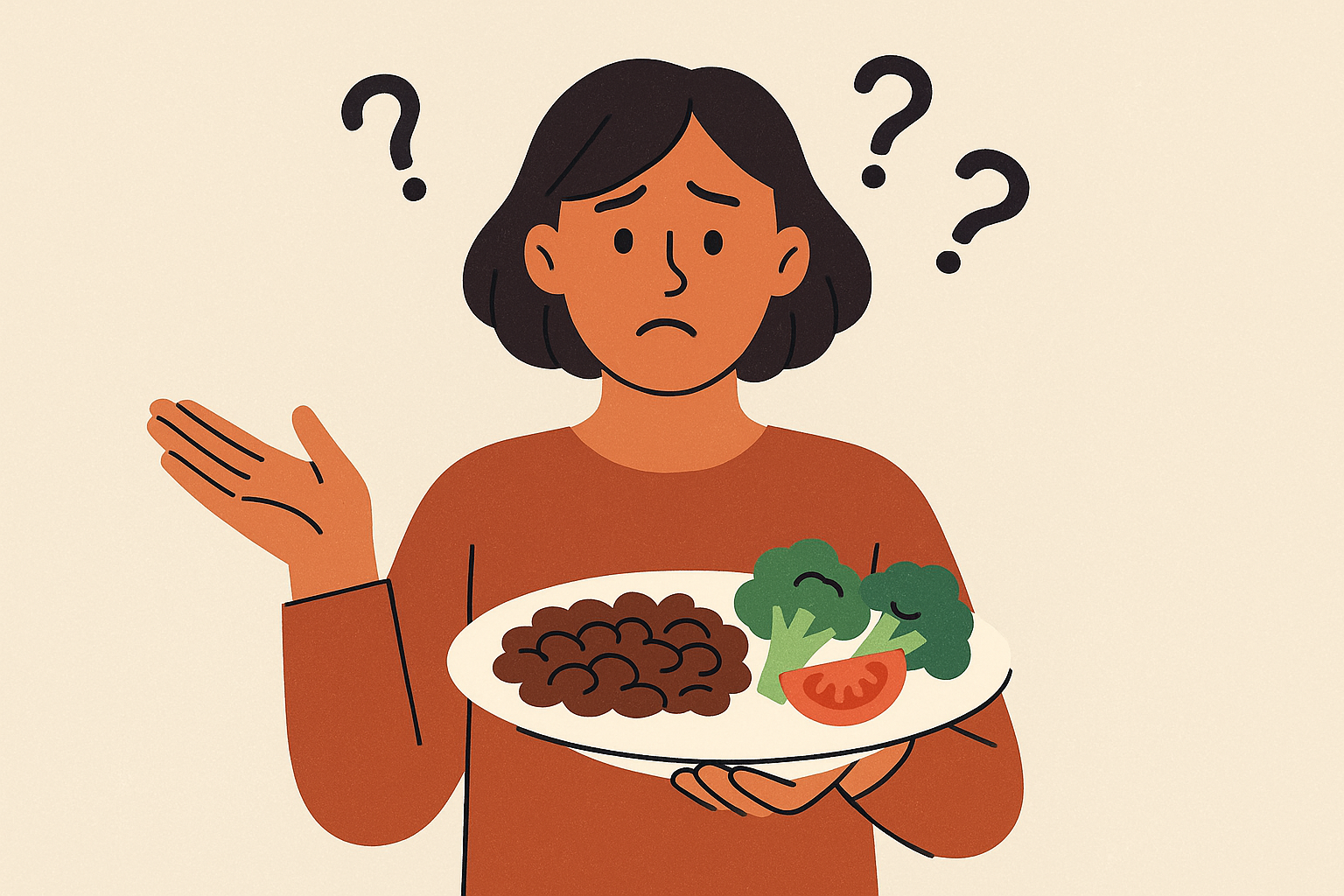
Look, I get it. You started the slow carb diet thinking it was just about avoiding bread and pasta, but by day three you felt like garbage and couldn’t figure out why. Here’s the thing nobody tells you – slow carb success has almost nothing to do with willpower and everything to do with working with your body’s natural rhythms instead of against them.
After trying this diet myself (and making plenty of mistakes), I learned that when you eat matters just as much as what you eat. Your body is basically running on a complex internal schedule, and if you ignore that schedule, you’ll be fighting an uphill battle no matter how perfectly you follow the food rules.
Understanding how to find your carb tolerance is crucial before diving into any restrictive eating plan, as individual responses to carbohydrates vary dramatically based on metabolic factors. The key is figuring out your personal patterns instead of following generic meal plans.
Your Body Handles Carbs Differently Throughout the Day
Here’s something weird I discovered – the exact same meal can make you feel amazing at 8 AM and terrible at 8 PM. Your body literally processes carbs differently throughout the day, and most people have no idea this is happening.
I spent months wondering why my slow carb approach worked some days and failed others. Turns out, the answer wasn’t in my food choices – it was in my timing. Your body’s ability to handle carbs peaks in the morning and tanks toward evening. This means that black bean scramble hits completely different depending on when you eat it.
Figure Out Your Personal Morning Hormone Pattern
Here’s where most people mess up – they assume everyone should eat breakfast immediately after waking up. But your natural morning stress hormone levels actually determine whether you should eat right away or wait 2-3 hours.
I learned this the hard way when I was forcing down eggs and beans at 7 AM, then crashing hard by 2 PM. Turns out my stress hormones peak about 90 minutes after I wake up, so eating immediately was working against my body’s natural rhythm.
According to Fresh Cap, “Breakfast should be protein-packed and eaten when you wake up. Eating breakfast within one hour of waking up is supposed to kick-start your metabolism for the day,” but here’s what they don’t mention – this timing should be personalized based on how your body actually works.
Here’s what I actually do (no fancy equipment needed):
- Test your energy levels eating breakfast at different times for one week
- Pick the time that feels best (you’ll know – no afternoon crash, steady energy)
- Stick with it for two weeks
- Adjust if needed
My friend Sarah was ready to quit the slow carb diet after two weeks. She’d wake up starving at 7 AM, force down eggs and beans, then crash hard around 2 PM. Once she delayed her black bean and spinach scramble until 8:30 AM, those afternoon energy crashes completely disappeared.
The Protein Front-Loading Trick That Actually Works
Your body has this built-in protein target that drives you to keep eating until you hit it. This is why you can eat a huge salad and still feel unsatisfied – your body is basically saying “where’s the protein?”
By getting 25-30g of complete protein at the start of each meal (black beans with hemp seeds work great), you naturally eat less overall without feeling restricted or using willpower. It’s like hacking your own appetite.
| Legume Base | Add This | Complete Protein (per cup) | Takes This Long |
|---|---|---|---|
| Black beans | Hemp seeds (2 tbsp) | 28g | 15 minutes |
| Lentils | Pumpkin seeds (¼ cup) | 32g | 20 minutes |
| Chickpeas | Tahini (2 tbsp) | 26g | 12 minutes |
| Pinto beans | Sunflower seeds (¼ cup) | 30g | 18 minutes |
The simple approach:
- Figure out how much protein you need (roughly 0.8-1.2g per kg body weight)
- Get 70% of that in your first two meals
- Combine legumes with seeds or nuts for complete proteins
- Rate how satisfied you feel after each meal on a scale of 1-10
Look, I’m not saying you need to become a bean mathematician. But if you’re going to eat lentils every day anyway, throwing some pumpkin seeds on top takes 30 seconds and makes you feel full for hours instead of hungry again in two hours.
The Nutrient Density Game Most People Miss
Traditional slow carb approaches obsess over what to avoid while completely ignoring whether you’re actually getting the nutrients your body needs. This is why people can follow the diet perfectly and still feel like crap – they’re technically eating the right foods but missing the deeper nutritional picture.
The importance of improving digestion becomes critical when following any restrictive eating plan, as your body needs to actually absorb and use the nutrients you’re consuming.
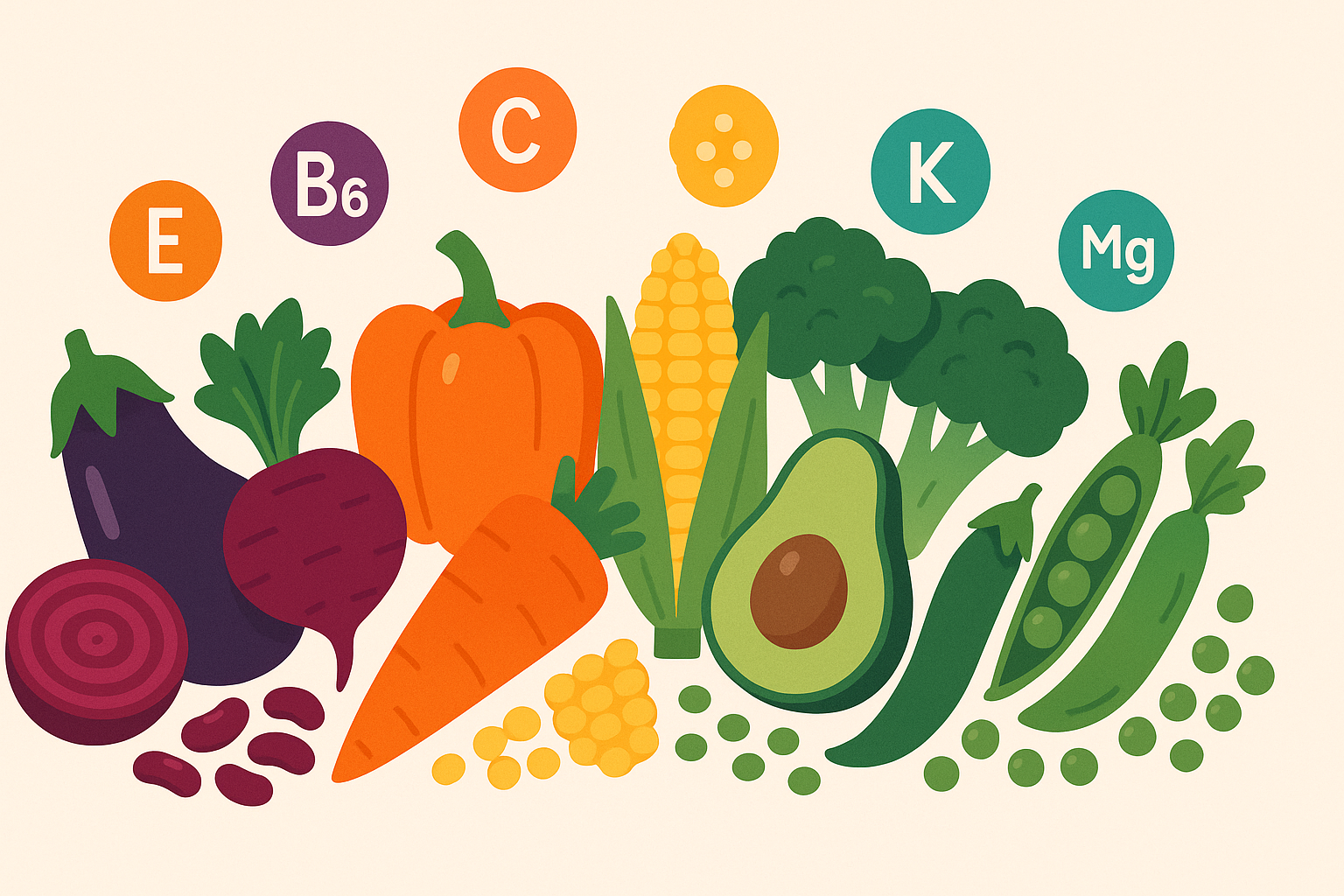
Why Rotating Your Vegetables Actually Matters
Here’s something that sounds nerdy but is actually pretty cool – different colored vegetables feed different types of bacteria in your gut. If you eat the same spinach and bell peppers every day, you’re basically starving certain bacterial populations that could be helping your metabolism.
I rotate between purple cabbage, red bell peppers, and dark leafy greens throughout the week. Each one feeds different gut bacteria that produce different beneficial compounds. It’s like having a diverse ecosystem in your digestive system instead of a monoculture.
Food Pairing That Actually Makes a Difference
Certain food combinations dramatically increase how much nutrition your body actually absorbs – something most meal plans completely ignore. It’s not complicated, but it makes a real difference.
Pairing iron-rich lentils with vitamin C-rich bell peppers, or combining magnesium-rich black beans with zinc-rich pumpkin seeds ensures your body actually uses the nutrients instead of just passing them through.
Research shows that “increased chewing is associated with reduced appetite and can positively impact gut hormones, insulin, and blood sugar levels” Fresh Cap. This means texture combinations that make you chew more actually help with satiety – another reason to keep your legumes slightly firm instead of mushy.
Meal Timing That Works With Your Body’s Schedule
Your body’s ability to process different nutrients changes dramatically throughout the day. Understanding this lets you eat more food while getting better results – the opposite of what most diets demand.
Why Morning Protein Hits Different
Your body’s protein-building machinery peaks in the morning and declines throughout the day. Getting 40% of your daily protein before noon keeps your metabolic rate high and maintains muscle mass during weight loss phases.
Mark, a software developer, restructured his protein intake to consume 45g in his morning lentil hash and 35g in his lunch chickpea salad. Within three weeks, he maintained muscle mass while losing 8 pounds. Previous attempts had him losing equal amounts of muscle and fat because he was eating most of his protein at dinner.
When you’re exploring 4 hour body recipes, focus on breakfast options that deliver this protein front-loading strategy. The original 4 hour body recipes often emphasize this principle, though most people miss the timing component that makes them actually work.
The Evening Carb Window That Changes Everything
Most people can handle slightly higher carb loads 4-6 hours before their natural bedtime due to improved insulin sensitivity during this window. This means you can strategically include sweet potatoes or quinoa in dinner meals without disrupting fat burning.
Post-Workout Nutrition Timing
The 30-minute window after exercise is when your muscles are most receptive to nutrients. Consuming a legume-based meal during this time maximizes muscle protein synthesis while staying within the slow carb framework – giving you the best of both worlds.

Understanding Your Body’s Internal Clock for Better Results
Here’s what’s actually happening in your body when you follow the slow carb diet – you’re cultivating specific types of bacteria that enhance fat metabolism and reduce inflammation. Most meal plans completely ignore this crucial component, which explains why some people thrive while others struggle on the exact same foods.
What are slow carbs exactly? They’re foods that digest slowly and provide sustained energy without dramatic blood sugar spikes. But here’s what most people don’t realize – the same slow carb food can behave completely differently in your body depending on how you prepare it and when you eat it.
The Weird Cooling Trick That Doubles Your Results
This next part might sound strange, but stick with me. When you cook legumes and sweet potatoes, then let them cool completely in the fridge, something interesting happens to their starch structure. They develop more “resistant starch” – basically starch that resists digestion and feeds your good gut bacteria instead.
Cook Once, Cool Twice, Win Forever
Cooking and cooling legumes and sweet potatoes increases their resistant starch content by 20-40%. This feeds beneficial bacteria while reducing the blood sugar impact of these foods. Yes, batch cooking beans on Sunday sounds boring, but it’s the difference between success and ordering pizza on Tuesday.
My typical Sunday: I throw a bunch of black beans in the slow cooker, chop some vegetables, and boom – I’ve got meals for the week. Is it exciting? No. Does it beat standing in my kitchen at 7 PM wondering what the hell to eat? Absolutely.
The approach aligns with current nutritional research showing that “the slower absorption helps maintain steady blood sugar levels, reduces spikes and crashes, and contributes to longer-lasting satiety” Hungry Root. This resistant starch manipulation amplifies these natural benefits.
Here’s what I actually do:
- Cook large batches of legumes and sweet potatoes on Sunday
- Let everything cool completely in the fridge for 12-24 hours before eating
- Reheat only to serving temperature, never to boiling
- Track how you feel over 2 weeks (better digestion, more stable energy)
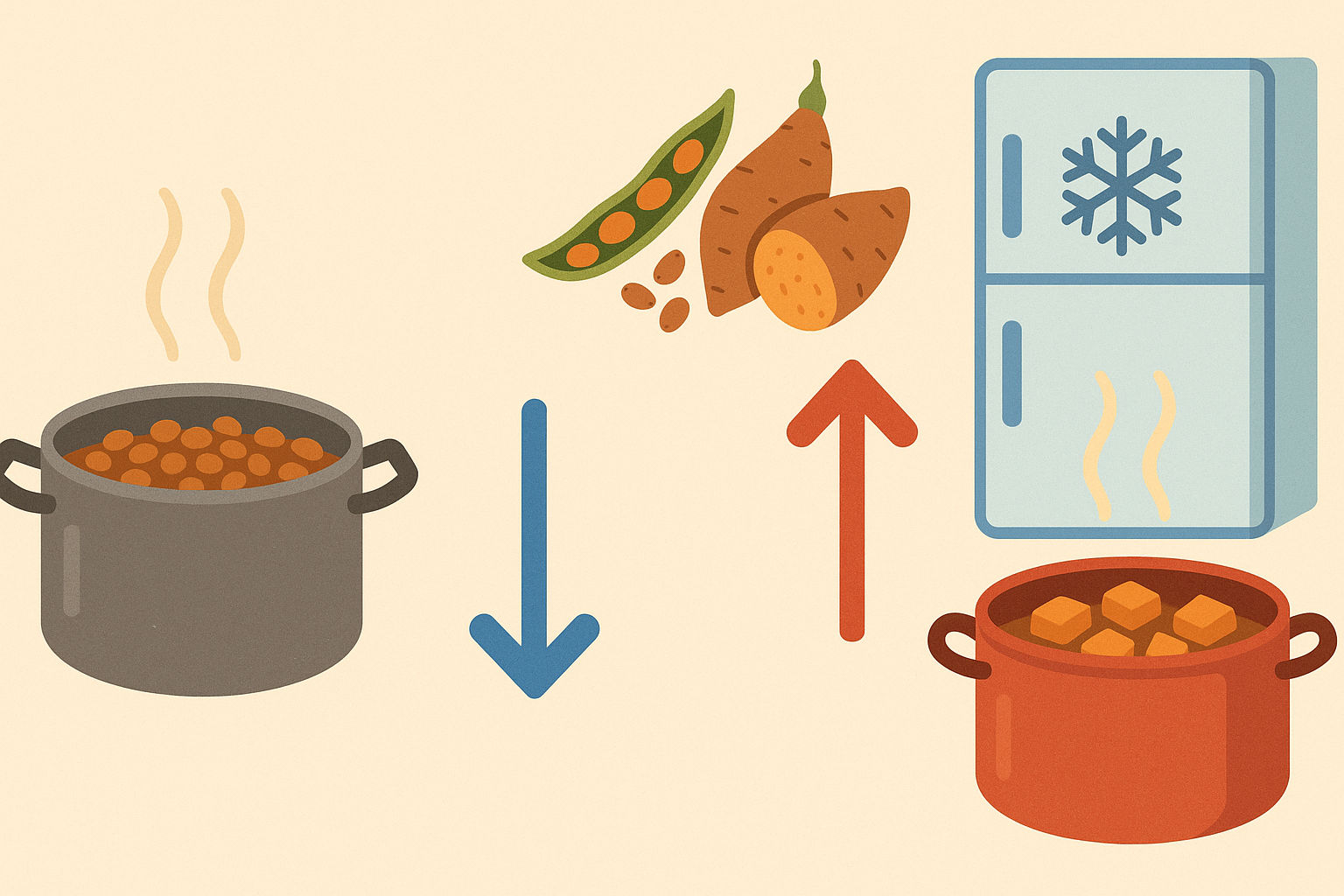
When you’re developing slow carb diet recipes, this cooling step becomes non-negotiable. I’ve found that 4 hour body recipes work even better when you incorporate this resistant starch manipulation technique.
The Fiber Order That Optimizes Gut Health
The order you consume different fiber types affects how bacteria ferment things in your gut. Starting meals with raw vegetables provides immediate fuel for good bacteria, while ending with cooked legumes provides sustained fermentation throughout the day.
The relationship between gut health and drinking vinegars has gained attention recently, as certain fermented beverages can support the digestive benefits of high-fiber meal plans.
Targeting Specific Gut Bacteria for Better Results
Different slow carb foods feed different types of bacteria in your gut, allowing you to customize your internal ecosystem for specific health outcomes. This level of precision makes the difference between generic results and transformational changes.
Boosting the Bacteria That Burn Fat
There’s this specific type of gut bacteria (Akkermansia – don’t worry about pronouncing it) that basically acts like your metabolism’s personal trainer. It loves cranberries, pomegranates, and green tea, which is why your cheat day can actually help if you’re strategic about it.
Growing the Bacteria That Improve Blood Sugar
Another group of beneficial bacteria (Bifidobacterium) responds strongly to foods like Jerusalem artichokes and garlic. Adding these to legume-based dishes creates a synergistic effect that improves how your body handles insulin and reduces inflammation.
| Bacterial Type | Feed It This | What It Does For You | How Often |
|---|---|---|---|
| Akkermansia | Cranberries, pomegranates, green tea | Enhanced fat burning | 2-3 times/week |
| Bifidobacterium | Jerusalem artichokes, garlic, onions | Better blood sugar control | Daily |
| Lactobacillus | Fermented vegetables, kimchi | Less inflammation | 4-5 times/week |
| Bacteroides | High-fiber legumes, resistant starch | Better nutrient absorption | Daily |
Why Your Gut Bacteria Determine Your Success
Here’s where it gets interesting – the slow carb diet’s effectiveness comes from orchestrating complex hormonal interactions, not just avoiding fast carbs. Mastering these hormonal cascades is what separates people who maintain their results long-term from those who yo-yo back to their starting weight.
Your slow carb journey becomes exponentially more effective when you understand that you’re feeding an entire ecosystem of bacteria that directly influence your metabolism. The 4hb diet approach works because it naturally supports beneficial bacterial populations, but you can amplify these effects with targeted strategies.
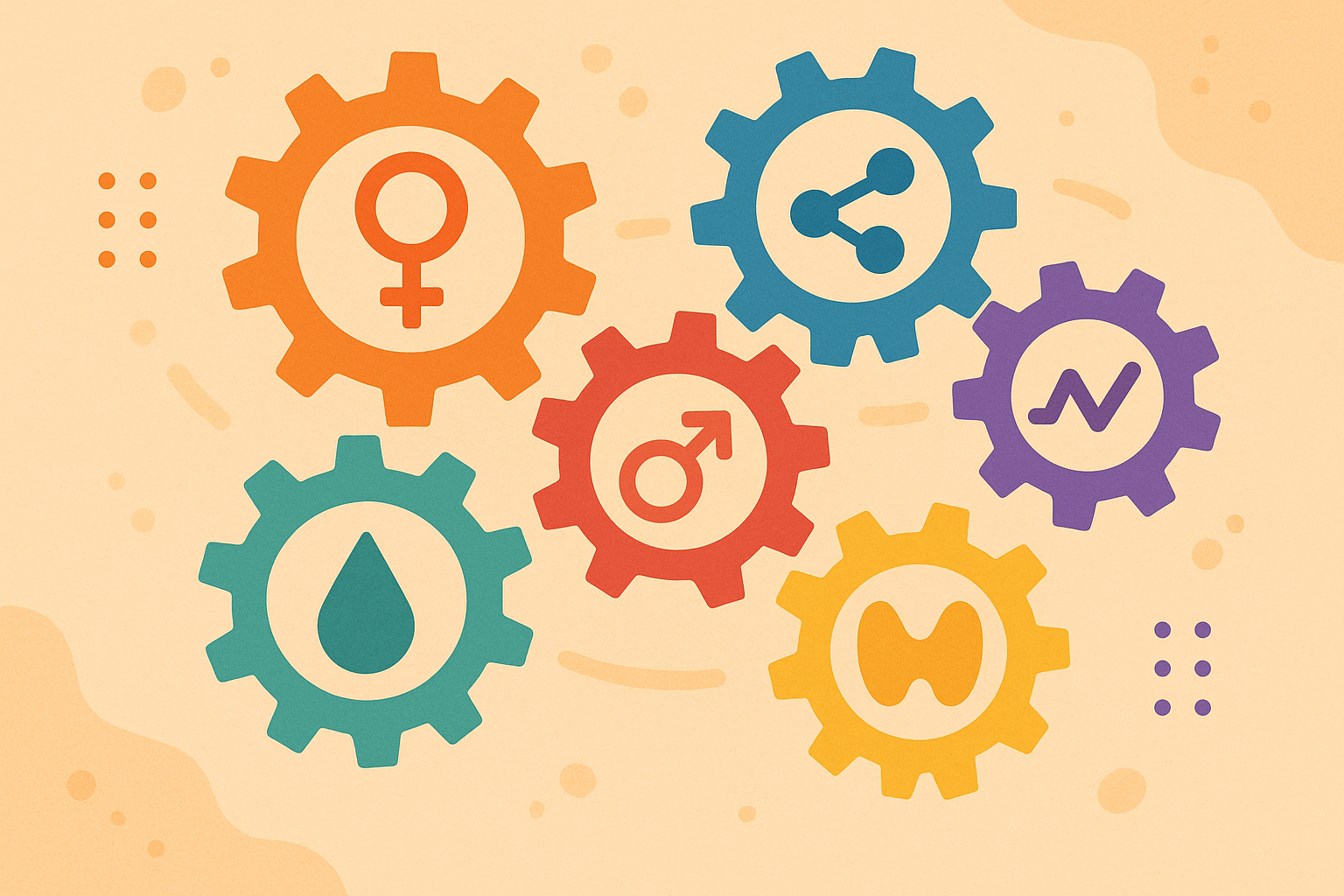
Fixing Your Body’s Broken Hunger Signals
Most people have some degree of leptin resistance, which prevents proper hunger signaling and makes you feel hungry even when you have adequate body fat. The slow carb approach can restore proper hunger signaling, but only with specific implementation strategies that most people miss.
Why Those Weekly Cheat Days Are Actually Necessary
Strategic cheat days aren’t just psychological breaks – they’re hormonal reset mechanisms. This sounds counterintuitive, but consuming 150-200% of normal calories from mixed foods every 7 days prevents your metabolism from slowing down and maintains proper hunger hormone function.
Here’s my weekly protocol:
- Plan cheat days exactly 7 days apart (no flexibility here )
- Include both simple and complex carbohydrates
- Consume 2-3x your normal calorie intake
- Return immediately to strict slow carb the following day
- Monitor weight and energy trends over 4-week cycles
My friend Jennifer discovered that her hunger levels improved dramatically when she consumed 4,500 calories on Saturdays (versus her normal 1,800 calories) including pizza, ice cream, and pastries. This weekly reset allowed her to maintain a 25-pound weight loss for over two years without plateaus. Fair warning: this isn’t Instagram-pretty, but it works.
Why Your Sleep Schedule Affects Tomorrow’s Hunger
Your hunger hormone production peaks during deep sleep phases, which means meal timing affects your appetite the next day. Consuming your largest slow carb meal 4-5 hours before bedtime optimizes hunger hormone production while maintaining stable blood sugar throughout the night.
Supporting Your Thyroid Without Supplements
Long-term carb restriction can suppress thyroid function, but strategic implementation of the slow carb approach can actually enhance thyroid health. The key is understanding which nutrients support thyroid conversion and ensuring adequate intake through food.
Supporting Active Thyroid Hormone Production
The conversion of inactive to active thyroid hormone requires specific nutrients that are abundant in slow carb foods: selenium from Brazil nuts, zinc from pumpkin seeds, and tyrosine from legumes. Strategic inclusion of these foods supports optimal thyroid function without needing supplements.
Preventing Metabolic Slowdown Through Adequate Calories
Chronic stress and extreme calorie restriction increase reverse thyroid hormone, which blocks active hormone and slows metabolism. Maintaining adequate calories from slow carb sources and managing stress prevents this metabolic slowdown that derails long-term success.
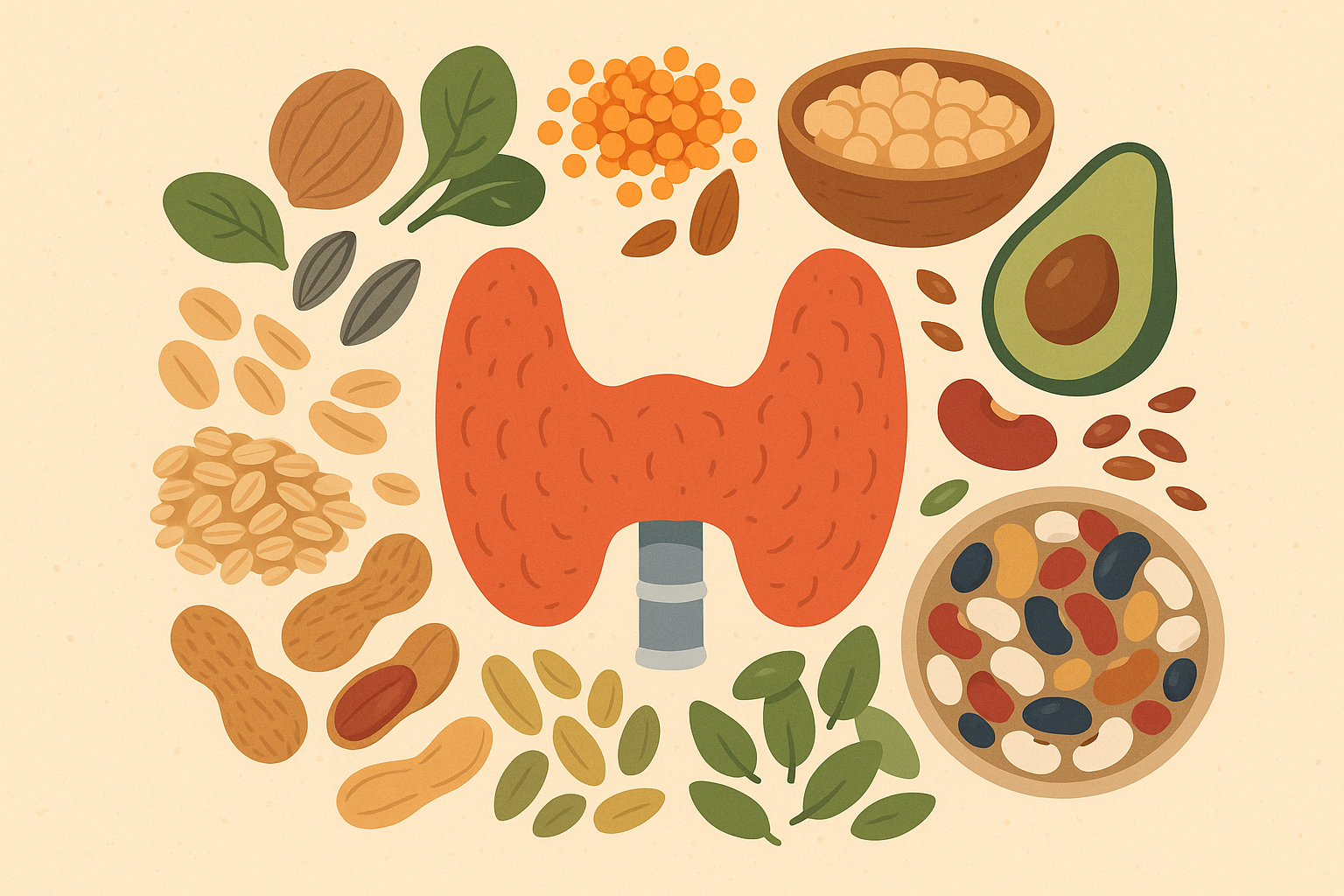
The Hormone Game You’re Probably Losing
The nutritional value of slow carb foods can be dramatically increased through specific preparation, combination, and timing strategies that most meal plans completely overlook. These techniques can increase nutrient absorption by 200-400%, making every meal significantly more effective.
Creating an effective slow carb diet meal plan requires understanding that identical foods can deliver vastly different nutritional payoffs depending on how you handle them. I’ve watched people struggle for months with perfectly planned meals that were nutritionally suboptimal due to preparation mistakes.
Activating Hidden Nutrients in Your Food
Many slow carb foods contain dormant enzymes that can be activated through specific preparation methods. This enzyme activation dramatically increases nutrient absorption and digestibility, reducing the bloating and digestive issues that some people experience with legume-heavy diets.
The Sprouting Process That Looks Like a Science Experiment
Sprouting legumes for 24-48 hours before cooking increases protein digestibility and reduces compounds that can interfere with mineral absorption. Fermenting vegetables creates beneficial enzymes and increases vitamin content while adding probiotics to support gut health.
Fair warning: sprouting legumes makes your kitchen look like a science experiment, but the results are worth it.
Here’s my preparation routine:
- Soak legumes for 12 hours, then allow to sprout for 24-48 hours
- Rinse sprouted legumes twice daily during the sprouting process
- Cook sprouted legumes as normal but reduce cooking time by 25%
- Ferment vegetables like cabbage and carrots for 3-7 days before adding to meals
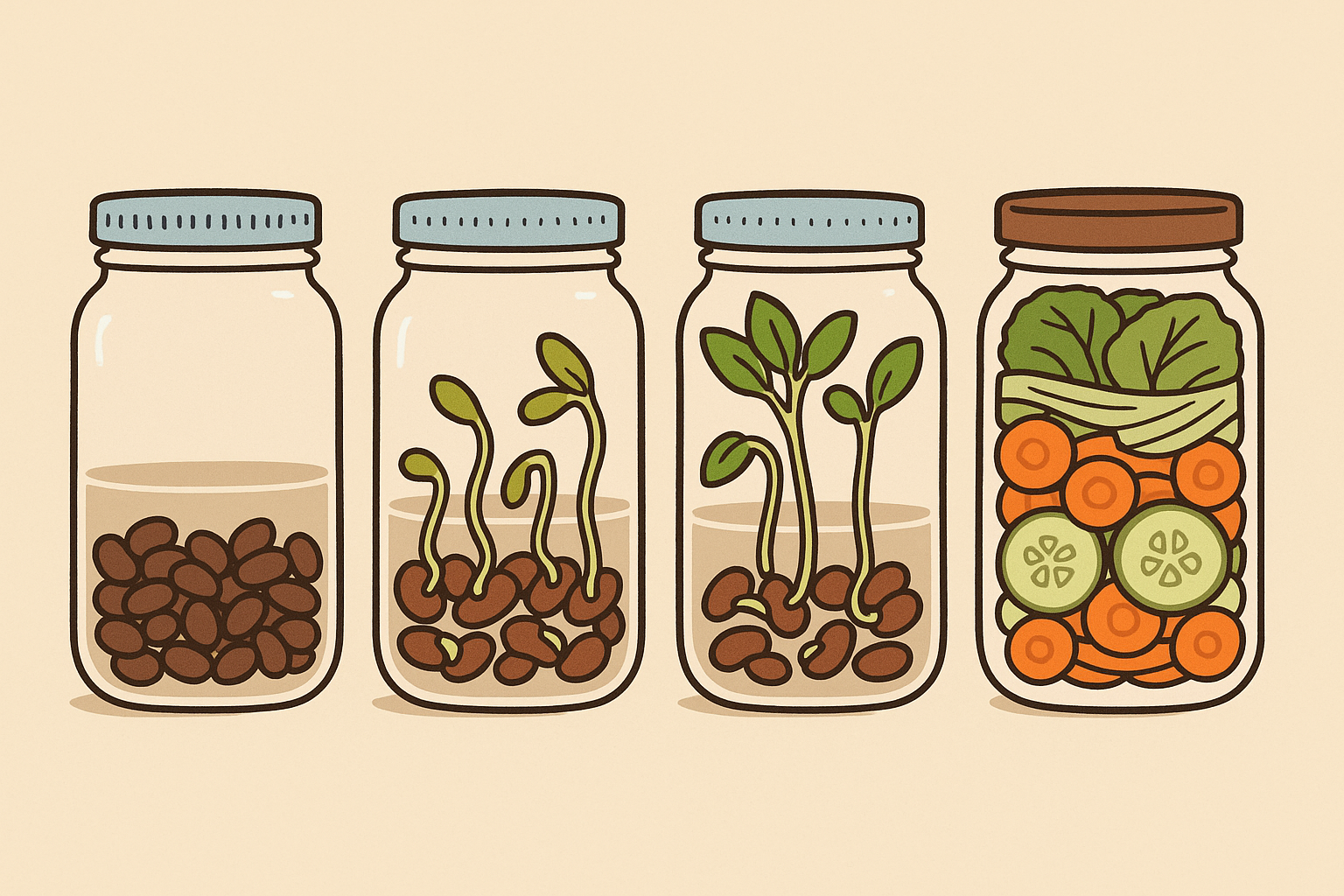
The Fat Addition That Multiplies Vitamin Absorption
Many nutrients in slow carb foods require fat for absorption, but most people don’t consume enough healthy fats with their meals. Strategic addition of 1-2 tablespoons of healthy fats (avocado, olive oil, nuts) to each meal can increase nutrient absorption by 300-500%.
Understanding which hormones to keep in balance becomes crucial when optimizing nutrient absorption, as fat-soluble vitamins directly influence hormone production and metabolic function.
Neutralizing the Stuff That Blocks Nutrient Absorption
Legumes and some vegetables contain compounds that can interfere with nutrient absorption, but specific preparation methods can neutralize these while maintaining all the slow carb benefits. Understanding these techniques prevents nutrient deficiencies that can derail your progress.
Reducing the Compounds That Block Mineral Absorption
Soaking legumes in slightly acidic water (add 1 tablespoon apple cider vinegar per cup of water) for 12-24 hours reduces compounds that block mineral absorption by 60-80%. This dramatically improves mineral absorption, particularly for iron, zinc, and magnesium.
Proper Cooking That Eliminates Digestive Issues
Pressure cooking legumes at high temperature completely deactivates lectins while preserving protein content. This method is superior to slow cooking for both nutrient retention and digestive comfort, eliminating the bloating that stops many people from succeeding.
How Cooking Methods Change Your Blood Sugar Response
The same slow carb food can have dramatically different metabolic effects depending on preparation method, texture, and temperature when consumed. Understanding these variables allows you to fine-tune your meals for optimal blood sugar control and satiety.
Texture Changes That Increase Fullness
Keeping legumes slightly firm rather than mushy increases chewing time and activates satiety hormones. The mechanical action of chewing triggers hormone release that signals fullness to the brain 15-20 minutes earlier than with soft textures.
The Temperature Trick That Slows Absorption
Let’s be real – eating room temperature food feels weird at first. But after a week of not having blood sugar crashes, you stop caring about whether your beans are Instagram-worthy.
Room temperature or slightly warm slow carb meals are absorbed more slowly than hot meals, creating a more gradual insulin response. This is particularly important for the first meal of the day when insulin sensitivity is naturally higher.
What this actually looks like:
- Allow cooked meals to cool to room temperature before eating
- Chew each bite 20-25 times to maximize satiety hormone release
- Monitor blood glucose response with a continuous glucose monitor for 2 weeks
- Adjust meal temperature based on your individual patterns

Making Your Food Actually Work for You
The original 4-Hour Body approach can be significantly enhanced through recent discoveries in metabolic research, creating a more sustainable and effective long-term strategy. These advanced modifications address the common sticking points that cause people to plateau or regain weight.
I know this sounds like a lot, but here’s the thing – you don’t need to do everything at once. Pick one thing that sounds doable and try it for two weeks. I started with just cooling my beans overnight, and that alone made a huge difference.
Combining Slow Carb with Strategic Low-Carb Days
Combining slow carb principles with strategic very low-carb periods amplifies fat loss while preventing the metabolic adaptation that often stalls progress. This approach creates true metabolic flexibility, allowing your body to efficiently burn both carbs and fat.
Weekly Flexibility Cycling That Prevents Plateaus
Alternating between 5 days of strict slow carb eating and 2 days of very low carb (under 30g total carbs) creates metabolic flexibility. This prevents your body from fully adapting to either approach, maintaining higher metabolic rates and continued fat loss.
Recent research on carb cycling shows promise, as noted by First For Women: “people who cut back on sugar and carbs experienced a 201 percent increase in the hunger-suppressing hormone leptin.” This hormonal advantage makes the cycling approach particularly effective.
My weekly cycling routine:
- Follow standard slow carb protocol Monday through Friday
- Eliminate all legumes and limit vegetables to leafy greens on weekends
- Increase healthy fats to 70% of calories on low-carb days
- Monitor ketone levels using urine strips or blood ketone meter
- Track energy, mood, and weight changes over 4-week cycles
Exercise-Induced Fat Burning Windows
High-intensity exercise performed in a fasted state can induce temporary fat-burning states even while following slow carb principles. This creates periods of enhanced fat oxidation without requiring strict carb elimination, giving you the benefits of both approaches.
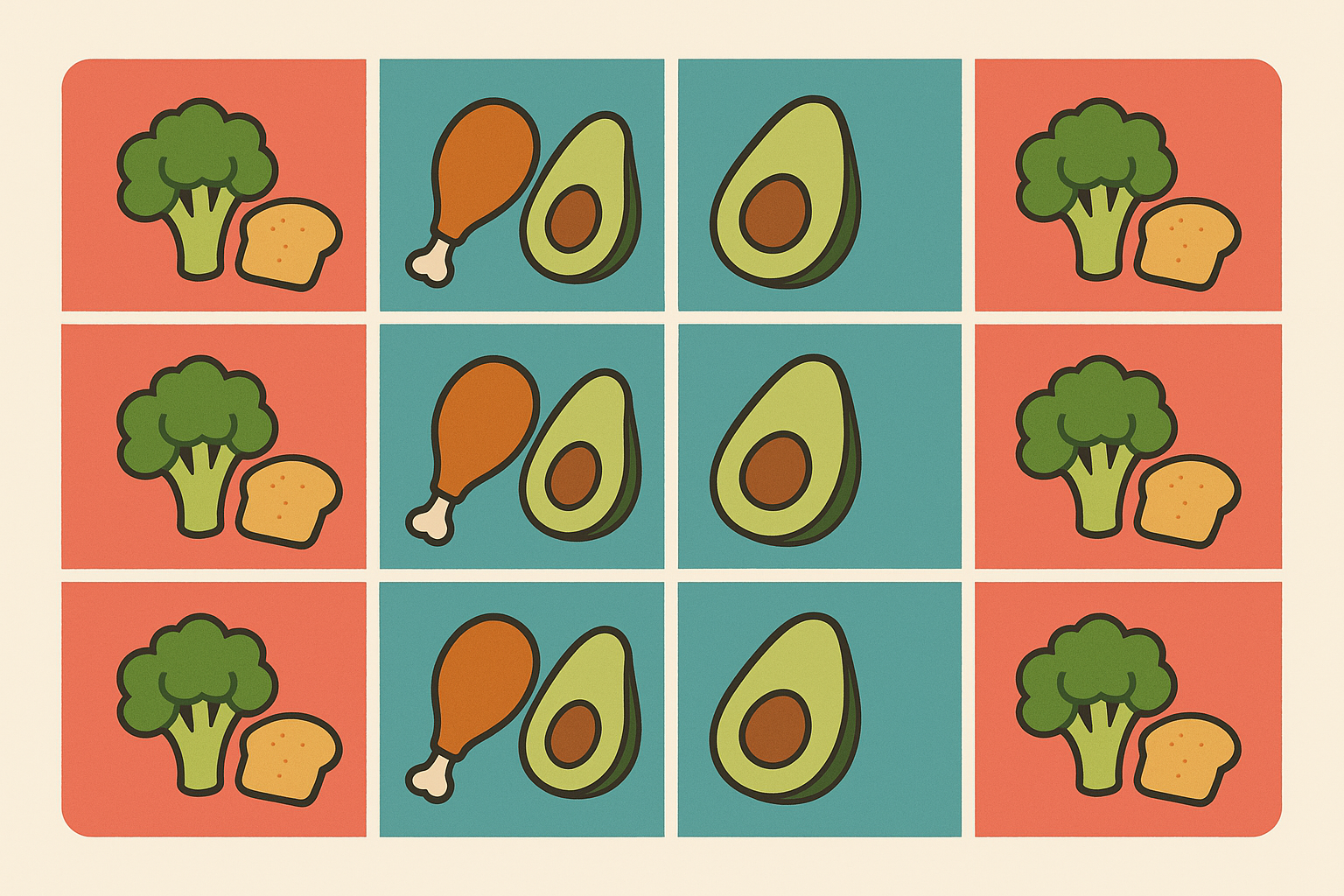
Strategic Supplementation for Common Issues
Targeted supplementation can address common slow carb diet challenges such as digestive discomfort, energy fluctuations, and micronutrient gaps. The key is timing these supplements correctly to maximize their effectiveness.
Digestive Enzyme Support
Taking specific enzymes 15 minutes before legume-heavy meals can prevent bloating and improve nutrient absorption. Alpha-galactosidase breaks down the complex sugars that cause gas, while protease improves protein utilization from your meals.
According to research, Ferriss suggests several supplements including “100 to 300 mg of alpha-lipoic acid” Prevention among others, though these should be personalized based on individual needs and digestive patterns.
Minerals for Enhanced Blood Sugar Control
These trace minerals enhance insulin sensitivity and glucose uptake by muscle cells. Taking 200mcg chromium and 10mg vanadium with your largest slow carb meal can significantly improve body composition changes over time.
Advanced Tweaks That Change Everything
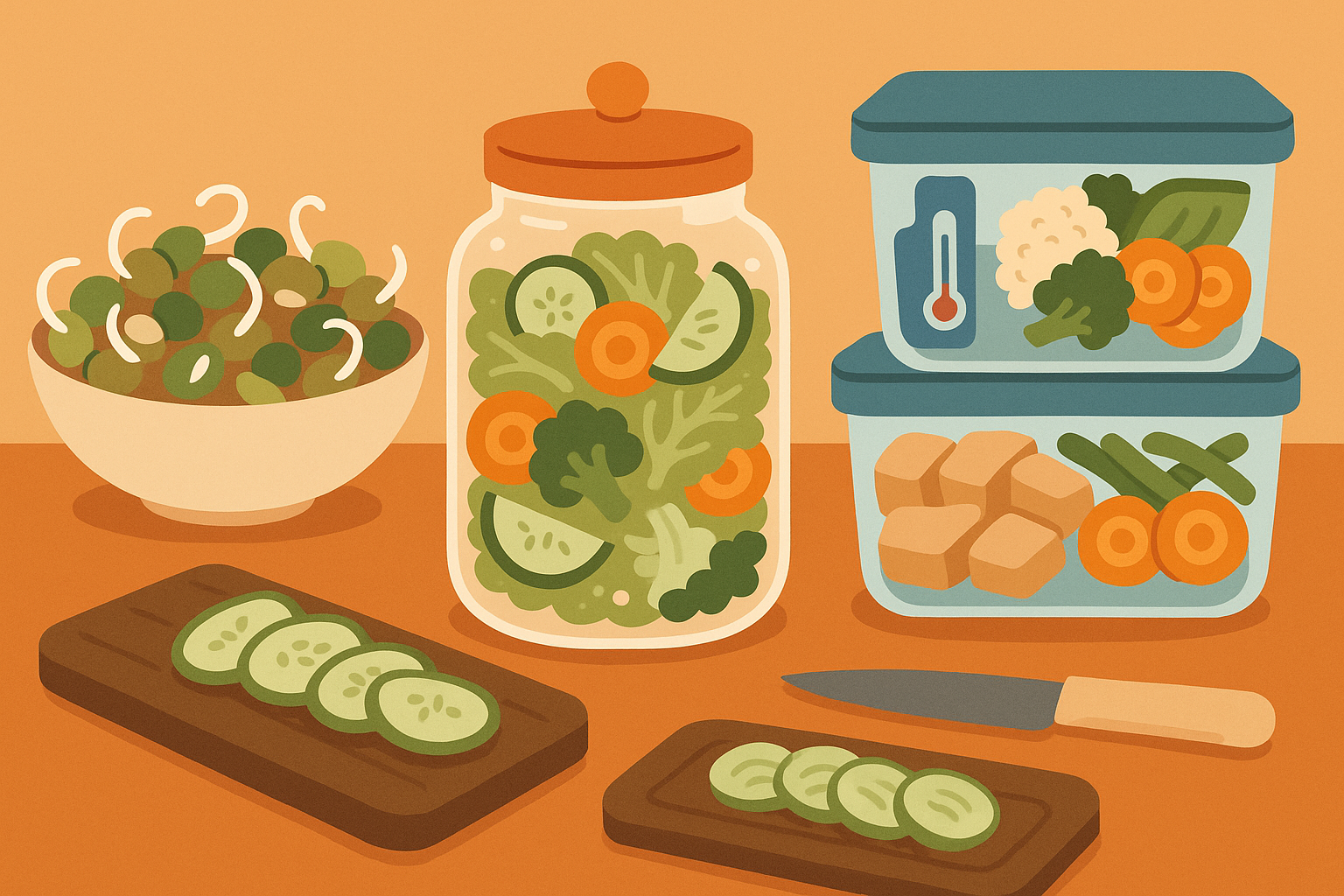
After implementing these approaches to slow carb meal planning, you might find yourself dealing with the complexities of maintaining optimal nutrient levels while following such a specific eating pattern. This is where Organic Authority’s premium supplements can bridge any gaps in your nutrition strategy. Their marine collagen provides superior absorption compared to traditional sources, supporting the muscle maintenance that’s crucial during any fat loss phase. When you’re optimizing every aspect of your slow carb approach – from meal timing to micronutrient density – having a trusted source for high-quality supplements ensures you’re not leaving anything to chance.
Final Thoughts
The difference between people who succeed long-term with slow carb and those who don’t isn’t willpower or genetics – it’s understanding what’s actually happening in your body and working with it instea d of against it.
Don’t overthink this. Tomorrow morning, eat breakfast one hour later than usual and see how you feel. That’s it. We’re not trying to optimize your entire endocrine system on day one.
Start with testing your energy levels at different meal times and adjusting accordingly. That single change often produces more dramatic results than weeks of perfect food choices with poor timing. From there, focus on the cooling trick for resistant starch and protein front-loading strategies – these create the foundation for everything else to work properly.
Remember, your body is incredibly adaptive, which means what works in month one might need adjustment by month three. The cyclical approaches I’ve outlined prevent this adaptation and keep your metabolism flexible and responsive. Most importantly, don’t try to implement everything at once. Pick 2-3 strategies that sound most doable for your current situation and master those before adding complexity.
This isn’t magic. You’ll still have days where you want to eat an entire pizza. The difference is now you have tools that actually work with your body instead of against it. Your slow carb journey doesn’t have to be a constant battle against cravings and energy crashes. When you work with your biology instead of fighting it, sustainable fat loss becomes the natural result of optimized physiology rather than forced restriction.

